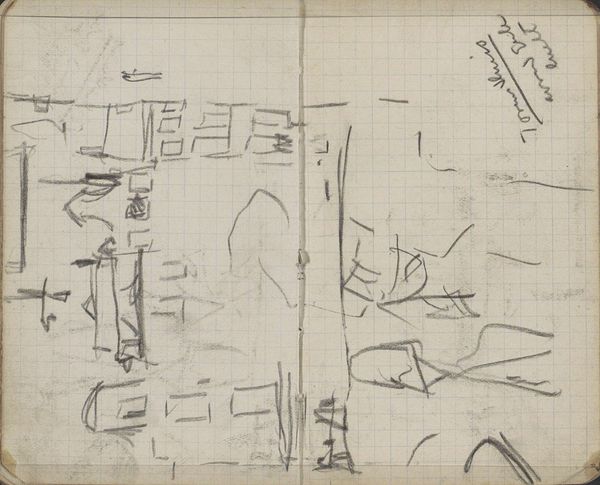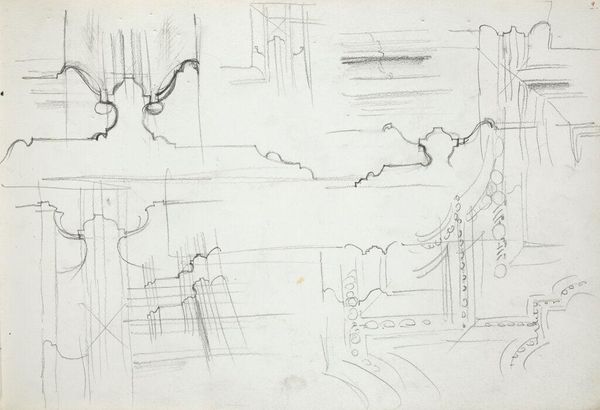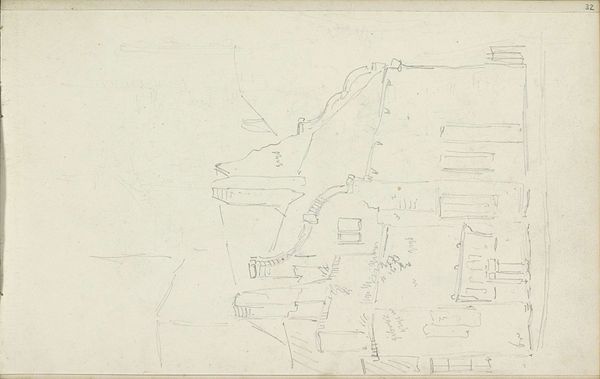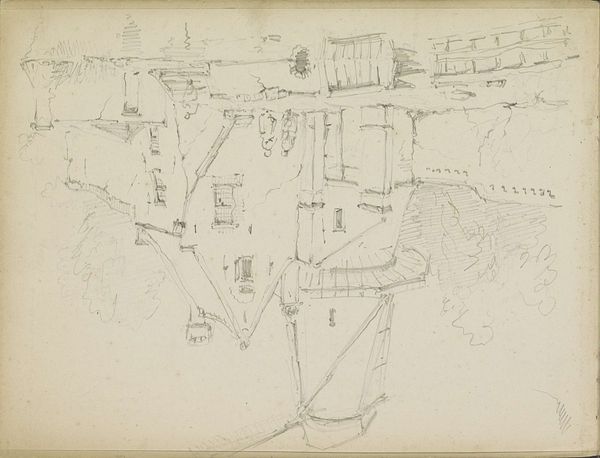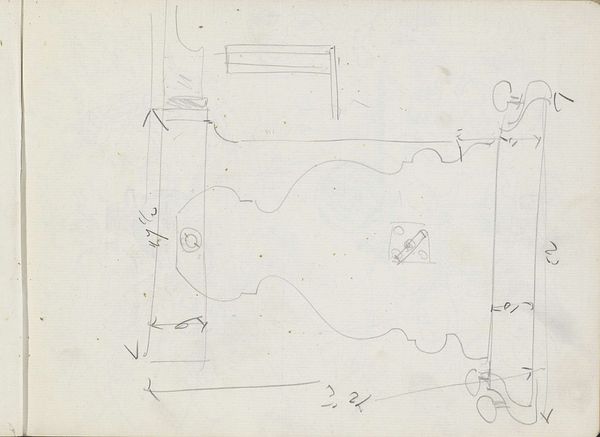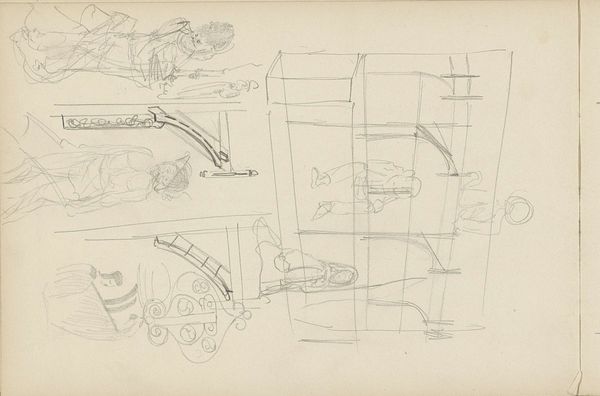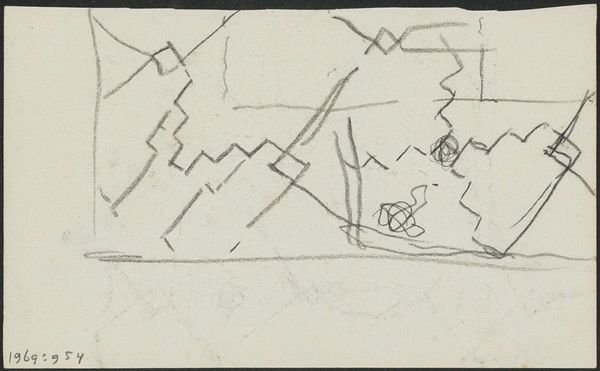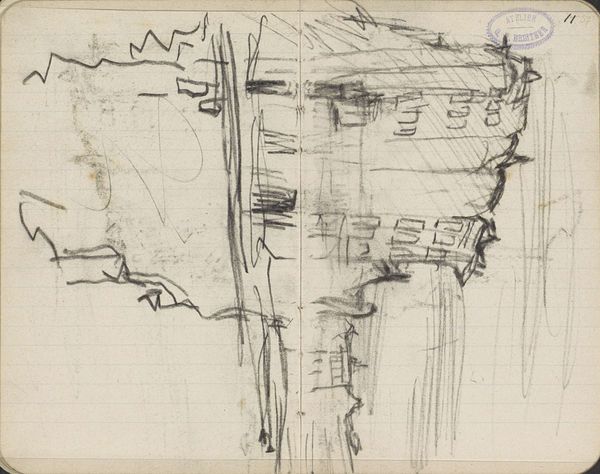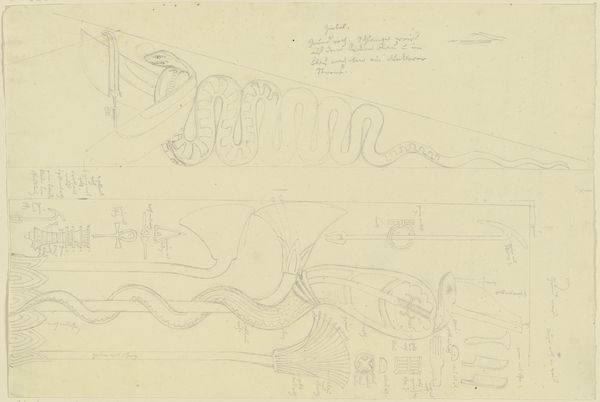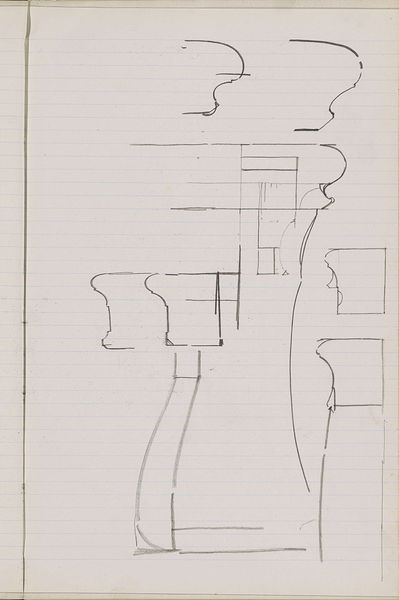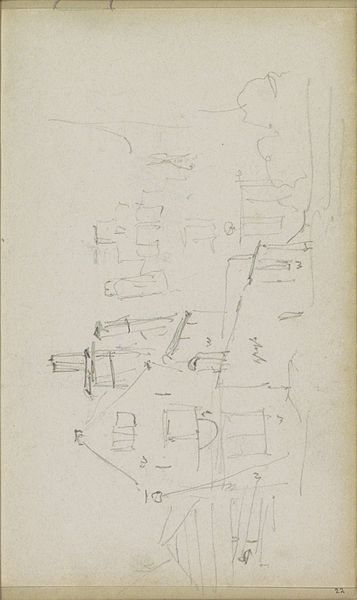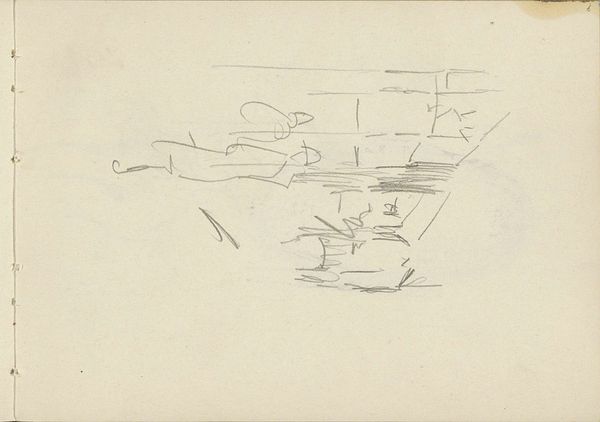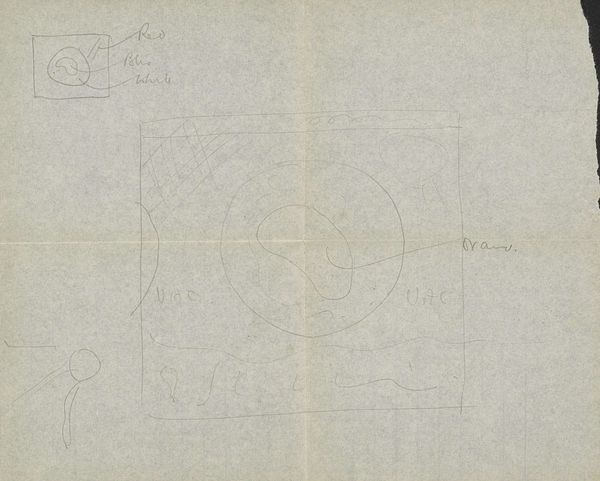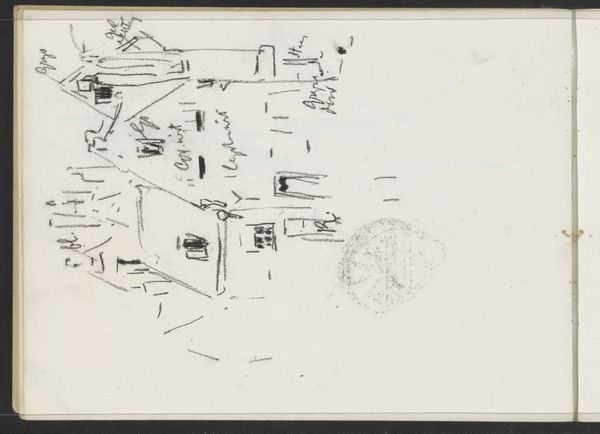
drawing, graphite
#
drawing
#
abstraction
#
line
#
graphite
Copyright: Public domain Belarus
Editor: This is Wladyslaw Strzeminski’s "A Sketch," created in 1941 using graphite and drawing. It’s quite faint, with lines that are barely there, and overlaid with numerical notations and an implied grid. It gives off a very schematic and unsettling feeling. How do you interpret this work? Curator: Its unsettling quality, I think, stems from its systematic yet organic feel. Note how Strzeminski contrasts rigid, geometric structures—the grid, the notations—with fluid, almost biomorphic shapes. Where do you think these shapes arise? Editor: Perhaps they’re cellular, or represent organic structures. The overall design is intriguing. The juxtaposition of hard lines and soft shapes suggests a mind attempting to find balance amidst chaos, maybe. Curator: Precisely. Observe the surface itself. It’s worked over, with erased or faded marks that hint at previous iterations. This layering speaks to the process of creation itself. How does the medium contribute to the piece? Editor: Well, the graphite seems incredibly delicate, almost ephemeral, mirroring the fragility of the forms themselves. Curator: The artist employs the intrinsic qualities of the graphite medium to explore tension. It seems like a planned sketch overlaid on previous geometric or mathematic calculations. Notice also the bareness of the support - almost aggressively exposed for observation, to dissect and ponder over. Is this not formalism distilled to its barest components? Editor: Yes, absolutely! The contrast is not something I noticed at first. It shows me how even in what appears minimal, there is so much to unpack through careful analysis of form and process. Curator: Indeed. Focusing on the "how" allows us to start a rigorous discussion of the artwork’s value.
Comments
No comments
Be the first to comment and join the conversation on the ultimate creative platform.
